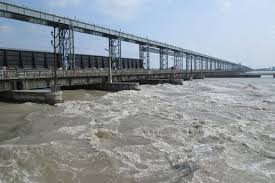The Mighty Koshi River: Nepal's Lifeline Professional
Nov 30th, 2023 at 10:02 Blogs Kathmandu 403 views Reference: 1170Location: Kathmandu
Price: Contact us
The Mighty Koshi River: Nepal's Lifeline
Introduction:
Flowing gracefully through the eastern landscapes of Nepal, the Koshi River stands as a symbol of vitality, cultural richness, and ecological significance. Known as the "Saptakoshi," meaning the river of seven channels, it is one of the major tributaries of the Ganges and plays a pivotal role in the lives of the people of Nepal. This article explores the geological, cultural, and environmental aspects of the mighty Koshi River.
Geographical Origin and Course:
The Koshi River originates high in the Tibetan plateau, where it is known as the Sapta Koshi. Flowing southward through the rugged terrains of the Himalayas, it enters Nepal, marking the beginning of its journey through the diverse landscapes of the country. The river is formed by the convergence of several tributaries, including the Arun River, Tamur River, Sun Koshi, Dudh Koshi, Indravati, Likhu, and Tamakoshi.
As it meanders through the hills and valleys of eastern Nepal, the Koshi River significantly contributes to the topography of the region. Its course is marked by deep gorges, lush forests, and fertile plains, creating a dynamic and ever-changing landscape.
Cultural Significance:
The Koshi River holds immense cultural importance for the people of Nepal. The river basin is home to various ethnic communities whose lives are intricately connected to the river. Villages and towns along the Koshi have developed unique cultural practices and traditions influenced by the river's presence. The Koshi Tappu Wildlife Reserve, situated in the eastern part of Nepal, is not only a biodiversity hotspot but also a cultural treasure trove for indigenous communities.
The Koshi River has also been a witness to historical events, shaping the course of human civilization in the region. The riverbanks are dotted with ancient temples, shrines, and settlements that reflect the rich cultural heritage of the area.
Ecological Diversity:
The Koshi River basin is renowned for its ecological diversity. The river and its surrounding areas are home to a variety of flora and fauna, including numerous species of fish, birds, and mammals. The Koshi Tappu Wildlife Reserve, a Ramsar Site, is a haven for bird enthusiasts, with over 500 bird species, including migratory birds that travel great distances to find refuge in the wetlands along the river.
Challenges and Conservation Efforts:
Despite its natural beauty and importance, the Koshi River faces various challenges, including the risk of flooding during the monsoon season. The Koshi Barrage, constructed near the Nepal-India border, is a vital infrastructure project aimed at mitigating flooding and managing water resources for irrigation.
Conservation efforts are ongoing to protect the unique ecosystems of the Koshi River and its tributaries. Initiatives focus on sustainable development, community engagement, and the preservation of biodiversity, aiming to strike a balance between human needs and environmental conservation.
Conclusion:
The Koshi River, with its majestic flow and cultural richness, remains a lifeline for the people of Nepal. From its origin in the Himalayas to its convergence with the Ganges in India, the river weaves a tapestry of ecological diversity and cultural heritage. As Nepal continues to develop, it is crucial to embrace a holistic approach to conservation, ensuring that the mighty Koshi River remains a source of life, inspiration, and connection for generations to come.


